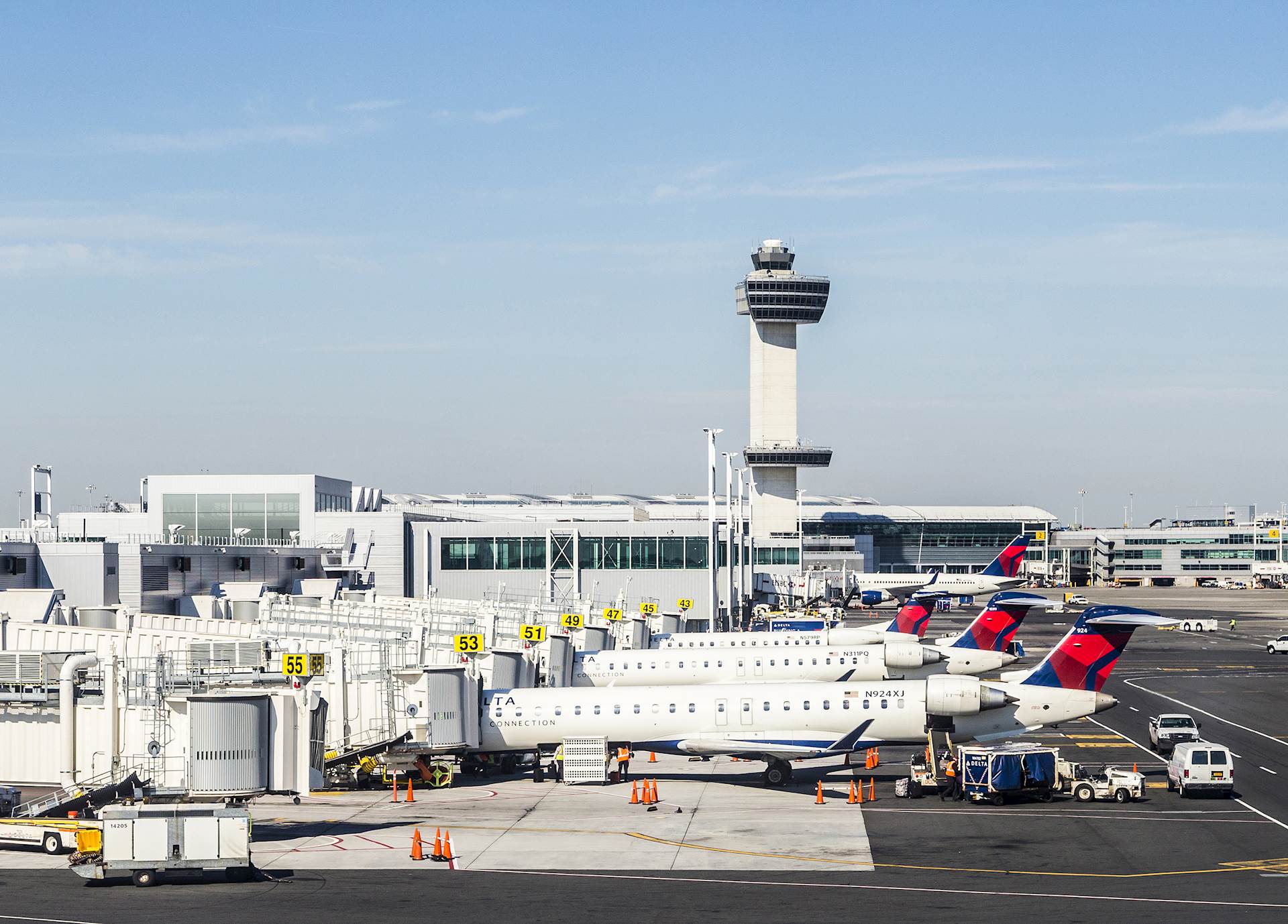
As we plan for the future of airport design, energy and resiliency are two of the most critical topics to address at our nation’s airports.
Hanson Senior Vice President and Energy, Sustainability and Resiliency Principal Bill Bradford, P.E., spoke about airport design trends on May 2 at the 2023 Southeast Chapter of the American Association of Airport Executives Annual Conference in Richmond, Virginia.
Bill emphasized that many initiatives are occurring throughout the aviation industry, and trying to predict the next trend is a full-time job. However, based on what we see, we know that imperative items for airports will include energy, decarbonization/greenhouse gases and resiliency.
Technology taking off
Airports are becoming more energy intensive. Discussion continues about moving to Advanced Air Mobility and electric vertical takeoff and landing aircraft; electric buses are becoming more prevalent; and rental car companies are moving to increased use of electric vehicles. These developments will involve increased electrification of systems and infrastructure at airports.
There is pressure from all sides to decarbonize, produce less greenhouse gas emissions and use a higher percentage of carbon-free electricity. For example, executive order 14057 does not apply directly to airports, but it typifies what we see in the industry and will affect airports peripherally in the future. Executive order 14057 requires the federal government to:
- achieve 100% carbon pollution-free electricity by 2030, including 50% on a 24/7 basis
- reach 100% zero-emission vehicle acquisition by 2035, including 100% light-duty acquisitions by 2027
- achieve net-zero building emissions by 2045, including a 50% reduction by 2032
- reduce scope 1 and 2 greenhouse gas emissions by 65% from 2008 levels by 2030
Each of these steps will require increased electrification and resiliency.
Energy roadmaps as a route to resiliency
The aviation industry recognizes the need to become more resilient and proactive. Recently, the Airport Cooperative Research Program selected Hanson to develop ACRP 02-98, “Airport Energy Resiliency Primer and Roadmap,” which emphasizes that airports must prioritize energy resiliency and be able to withstand, adapt and overcome the changing energy landscape, whether those changes are caused by preparing for deliberate attacks, accidents or naturally occurring events.
To help our customers, Hanson has provided multiple energy and resiliency roadmaps. When developing an energy and resiliency roadmap, airports need to begin with the end in mind. What are the ultimate goals? Airports should include short-term goals for immediate successes. However, they should also develop a long-term energy strategy focused on forecasting future energy demand, prepare for higher overall energy use and consider a grid infrastructure that may not be 100% reliable.
Our energy and resiliency roadmaps, which help our customers reduce their energy use and increase their sustainability, are living documents that can be updated as the energy situation changes.
The process we undertake to develop energy roadmaps is data intensive and includes looking at energy forecasts, interrogating the building automation systems and developing an energy baseline of exactly how much energy the facility is using. It also includes goals and strategies for reducing energy use and increasing energy resiliency, as well as integration with the customer’s overall sustainability and resiliency master plans.
Two airports, two approaches
Examples of two of the energy roadmaps we have developed are for Orlando International Airport and JFK International Air Terminal 4.
Hanson provided the energy roadmap for Orlando International Airport prior to construction of the new South Terminal Complex, which included Phase 1 (the $700 million automated people mover, integrated transfer facility and passenger drop-off facility) and Phase 2 (the approximately $2.7 billion South Terminal C). We examined existing consumption and demand and benchmarked over 85% of the utilities serving the airport. We also set targets for reduction and used a five-year payback criterion and how the recommended measures would fit with the projected growth scenarios.
The JFK International Airport Terminal 4 Energy Roadmap is different in that it is an existing space and does not look at the same type of growth scenarios as Orlando International Airport. For JFK, we have completed tasks 1 and 2 and identified hundreds of facility improvement measures, with almost two-thirds of them being low-cost and no-cost measures that can be implemented immediately by the airport’s staff or contractors and will give the airport immediate (or almost immediate) payback.
Our next tasks for JFK IAT 4 are to develop energy forecasts for the terminal and look at the effects that upcoming projects will have on energy use. We will then provide recommendations for prioritizing project plans in upcoming years.
Always improving
With every energy and resiliency roadmap that Hanson develops, we stress the need to implement persistence strategies (e.g., continually updating design standards, commissioning all projects using fault detection and diagnostics for energy dashboards and more) to keep airport and community initiatives on track. We also encourage airports to integrate their energy and resiliency master plans with their sustainability master plans.
Check back for our next post, which will explore the role of commissioning in airports’ energy and resiliency.
Bill Bradford, P.E., can be reached at bbradford@hanson-inc.com.